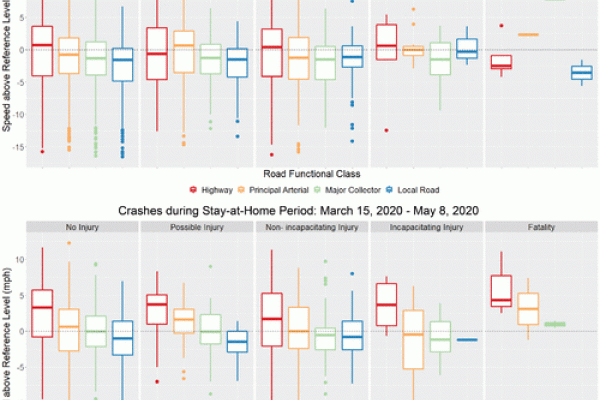Lower Volumes, Higher Speeds: Changes to Crash Type, Timing, and Severity on Urban Roads from COVID-19 Stay-at-Home Policies

A new article co-authored by CURA's Director Harvey Miller and former CURA Graduate Research Associate Jinhyung Lee has been published in the journal Transportation Research Record. This study analyzed the increased speed-related crashes during the Coronavirus pandemic. The Ohio State News also recently published an article on the study, in this article Dr. Miller was quoted saying:
“This is more evidence that our streets are designed for speed, not safety. What is keeping crashes from being more severe during normal times is higher volumes of traffic, and once traffic goes away, people speed and crashes have more serious consequences.”
Abstract:
Stay-at-home policies in response to COVID-19 transformed high-volume arterials and highways into lower-volume roads, and reduced congestion during peak travel times. To learn from the effects of this transformation on traffic safety, an analysis of crash data in Ohio’s Franklin County, U.S., from February to May 2020 is presented, augmented by speed and network data. Crash characteristics such as type and time of day are analyzed during a period of stay-at-home guidelines, and two models are estimated: (i) a multinomial logistic regression that relates daily volume to crash severity; and (ii) a Bayesian hierarchical logistic regression model that relates increases in average road speeds to increased severity and the likelihood of a crash being fatal. The findings confirm that lower volumes are associated with higher severity. The opportunity of the pandemic response is taken to explore the mechanisms of this effect. It is shown that higher speeds were associated with more severe crashes, a lower proportion of crashes were observed during morning peaks, and there was a reduction in types of crashes that occur in congestion. It is also noted that there was an increase in the proportion of crashes related to intoxication and speeding. The importance of the findings lay in the risk to essential workers who were required to use the road system while others could telework from home. Possibilities of similar shocks to travel demand in the future, and that traffic volumes may not recover to previous levels, are discussed, and policies are recommended that could reduce the risk of incapacitating and fatal crashes for continuing road users.
Authors: Stiles, Jonathan, Armita Kar, Jinhyung Lee, and Harvey J. Miller.
